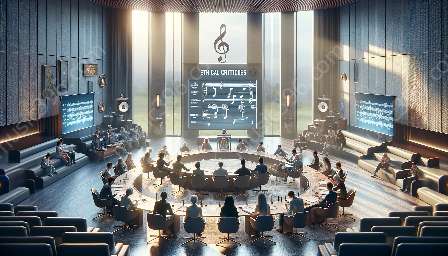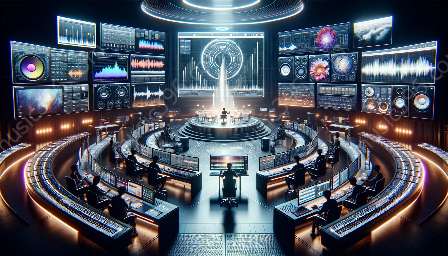Jazz music criticism encompasses a wide range of perspectives and evaluations that focus on various elements of the genre. From the perspective of music criticism as a whole, jazz presents its own unique challenges and considerations. In this topic cluster, we will explore the key elements of jazz music criticism in a comprehensive and engaging manner.
Understanding Jazz Music Criticism
Jazz music criticism involves the nuanced evaluation and analysis of the music within the jazz genre. Critics often assess the artistic expression, technical skill, and innovation displayed by musicians, as well as the cultural and historical context of the music. Some key elements that play a crucial role in the criticism of jazz music include:
- Improvisation: Jazz is known for its emphasis on improvisation, where musicians create music on the spot. Criticism of jazz music often involves evaluating the quality and creativity of improvisational performances, recognizing the spontaneity and virtuosity of the musicians.
- Composition: Criticism in jazz music also delves into the composition of the music, including the harmonic structures, melodic themes, and arrangements. Critics assess the originality and sophistication of compositions, as well as the musicians' interpretations and adaptations.
- Rhythm: The rhythmic complexity and diversity in jazz music are crucial elements that are closely examined in criticism. Evaluating rhythm in jazz involves an understanding of various time signatures, syncopation, and rhythmic interplay among the musicians.
- Cultural Context: Jazz music criticism often considers the cultural and historical background of the music, acknowledging the influences of different traditions, social movements, and geographical regions on the development of jazz.
Approaches to Jazz Music Criticism
When critiquing jazz music, critics employ various approaches to capture the essence of the genre and provide insightful analysis. Some common approaches to jazz music criticism include:
- Historical Perspective: Critics may examine jazz music within its historical context, tracing its evolution and impact on cultural and social movements. Understanding the historical progression of jazz helps critics contextualize the music and its relevance.
- Technical Analysis: Jazz music criticism often involves detailed technical analysis, including harmonic and rhythmic analysis, improvisational techniques, and instrumental proficiency. Critiques may focus on the musicians' technical prowess and their ability to innovate within the jazz idiom.
- Sociocultural Critique: Some critics approach jazz music from a sociocultural perspective, exploring how the music reflects and influences societal norms, attitudes, and values, particularly in relation to race, gender, and class dynamics.
- Artistic Expression: Evaluating jazz music as a form of artistic expression is a fundamental aspect of criticism. Critics analyze the emotional depth, creativity, and communicative power of the music, considering how jazz musicians convey their personal experiences and perspectives through their performances.
- Innovation and Tradition: Jazz music criticism often grapples with the tension between innovation and tradition within the genre. Critics assess how musicians balance innovative approaches with respect for jazz traditions, recognizing the ongoing evolution of jazz as an art form.
Challenges in Jazz Music Criticism
Criticizing jazz music involves unique challenges and complexities that distinguish it from the evaluation of other musical genres. Some of the challenges in jazz music criticism include:
- Interpretation of Improvisation: Critically evaluating improvised performances requires a deep understanding of musical improvisation and the ability to discern the nuances of spontaneity, creativity, and cohesion within the music.
- Diversity of Substyles: Jazz encompasses a wide range of substyles, from traditional Dixieland and swing to avant-garde and fusion. Critics must navigate the diversity within jazz to provide meaningful and informed critiques that reflect the stylistic nuances of each subgenre.
- Complexity of Composition: Analyzing the harmonic, melodic, and rhythmic intricacies of jazz compositions demands a high level of musical acumen and analytical skill from critics, who must articulate the complexity of the music in accessible terms.
- Authenticity and Innovation: Balancing the appreciation of traditional jazz conventions with the recognition of innovative approaches challenges critics to discern and articulate the authenticity and ingenuity of jazz musicians' expressions.
Conclusion: The Art of Jazz Music Criticism
Jazz music criticism captivates the imagination and intellect, inviting a deep exploration of artistic expression and cultural significance within the genre. By understanding the key elements of jazz music criticism, from improvisation and composition to cultural context and artistic innovation, we gain a richer appreciation of the nuance and complexity of this influential musical tradition.







































